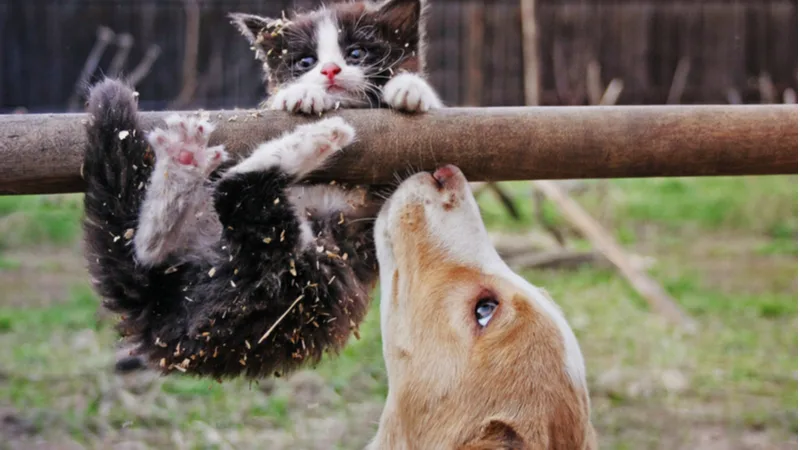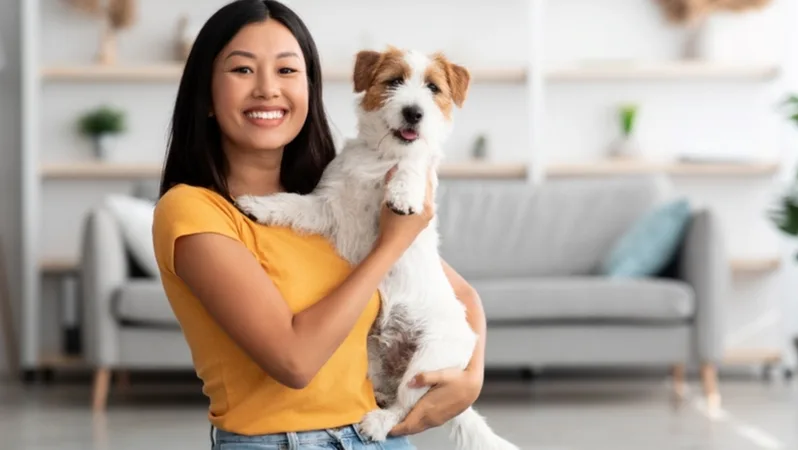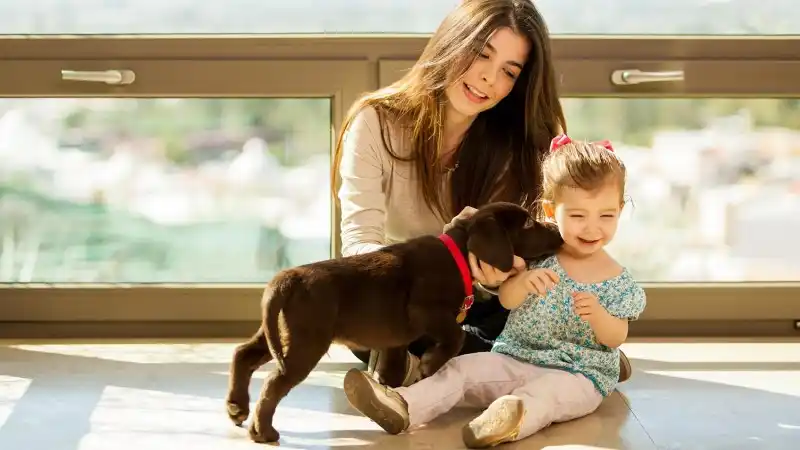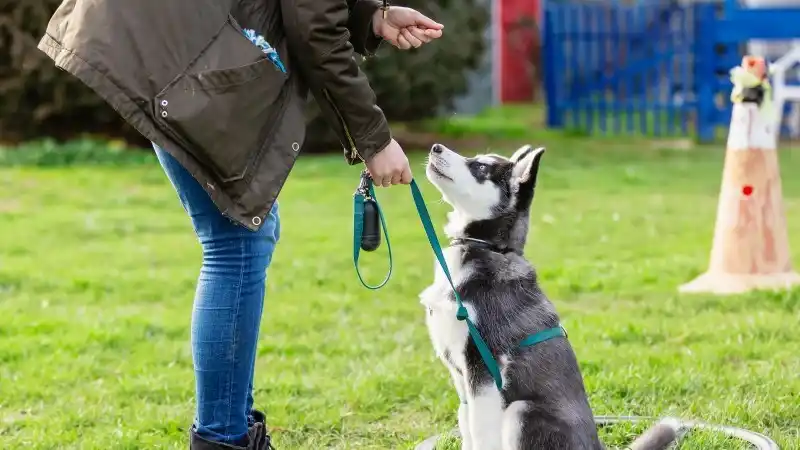Train Your Dog to Stop Chasing Your Cat
Does your dog chase your cat like they want to eat them? If so, here are behavioral training tips to help your rival pets leave each other alone and even get along!

Have you seen those adorable images of a German Shepherd snuggled up with a kitten on social media? They’re cute, aren’t they?
Unfortunately, things aren’t always that peaceful in homes with dogs and cats. As a matter of fact, it can get rather stressful if your dog wants to eat your cat.
Why do some pets get along, while others literally fight like cats and dogs? Is there hope for a previously incompatible dog and cat to happily co-exist?
Fortunately, many dogs can be desensitized to other household pets – even cats. Try the home behavior modifications below and see how if it helps bring your rival pets together.
First things first though, consider your dog’s prey drive.
Why Do Dogs Want to Eat Cats?
Why would your dog want to eat your cat anyway? Some dogs are driven to chase things smaller than them. This can extend to squirrels, hamsters, and, yes, cats. If you have a hunting breed, they may see your cat as a creature to be hunted. It’s instinctual.
Other times, your dog might be having a bit of fun at your cat’s expense. They don’t really want to eat your cat, but they do want to chase them. Of course, this kind of play stresses your cat out, so you’ll want to discourage it. That’s when it’s helpful to recognize dog and cat body language and distinguish between play and natural aggression.
For example, if your cat has their ears pinned back and tail swishing, then they probably feel intimidated.
Assess Personalities and History
Personality and history play a significant role in how well fur-kids get along. What’s the history between these dogs and cats? Are they new to your home? Did you adopt them from a shelter at different times? Is there a big age gap? Is one new to your home, while the other is asserting territorial dominance?
The answers to these questions play an essential role in the co-existence of your dog and cat.
Try These Behavior Modification Methods
These training methods can help your pets live happily together. It all starts with the first greeting.
Manage Their First Introduction
It’s a cliché, but pets really do only get one chance at a first impression. If you bring home a new pet, you should plan the first meet and greet with veteran pets very carefully. For example, if you adopt a kitty and have a three-year-old pup, you’ll want to keep the dog crated or in another room while your cat warms up to their new surroundings.
There’s a lot to adjust to in those early days, so let the newcomer get comfortable with the new environment and human housemates before you introduce another animal. After a couple of days, you can let your kitty and pup sniff one another through the door. You can also trade out favorite toys or blankets with them, so they get comfortable with each other’s scents.
The Formal Introduction
This is the time for your best animal management skills. Enlist a helper if you need assistance.
If your dog is crate trained, you can keep your pup in the crate and let the kitty loose in the room with them. Stand near the dog and feed them tasty treats as the cat explores. Notice if there’s tension, mild curiosity, or if they ignore one another.
You can also let them meet with a baby gate in between them (unless your dog can leap over the gate). However, you don’t want to terrify the cat. If you can handle your dog while they’re leashed and feed a steady stream of treats, you can go that route.
The goal? Give the cat room to escape and encourage your dog to associate good things (like treats) with cats.
Provide a Safe Space
Give your cat a high perch. Whether a special kitty shelf or the top of a bureau, your cat’s first inclination may be to go high to safety. Anticipate this instinct and prepare a few high spaces in your home. That way, your cat can leap onto a shelf and watch your dog from above.
If your cat feels in control of their safety, they’re more likely to accept the dog over time.
Train Basic Commands
When your dog follows basic commands like “Sit,” “Stay,” and “Leave it,” they’ll trust you for direction in general. Now it’s up to you to reinforce this during periods of distraction. For example, if the cat comes into the room, your goal is to keep your dog’s attention focused on you and the high-value treats you’re feeding.
High Value Treats
Praise and yummy treats for your dog can ensure your pup equates the kitty with good things. In dog training land, high-value treats are things your dog doesn’t usually get. For example, small bites of chicken, cheese, ham, or hot dogs can help keep your dog’s attention.
If your dog responds well to basic commands and treats, then you should offer a treat whenever your kitty is nearby. It’ll help your pup focus on you rather than their new housemate.
As you can see, training your dog to live in harmony with a cat takes some patience, but it’s well worth it. Start slow, don’t force it, use high-value treats, give your cat an escape route, and hopefully, your dog and cat will come to terms with each other.
Take some of the stress out of pet ownership with Accident & Illness Coverage through AKC Pet Insurance (underwritten by Independence American Insurance Company). Our pet insurance plans are designed to be there when you need them, allowing you to focus more on the health of your pet and less on costly veterinary bills.

Every Dog and Cat Deserves the Pet Insurance of Champions
Get prize-winning care for your pets.
A connoisseur of fluffy pups, Jen Phillips April started writing about dog health back in 2005 with a dog treat recipe site. Now she writes for multiple pet brands, veterinarians, and pet tech.
READ MORE ARTICLES

